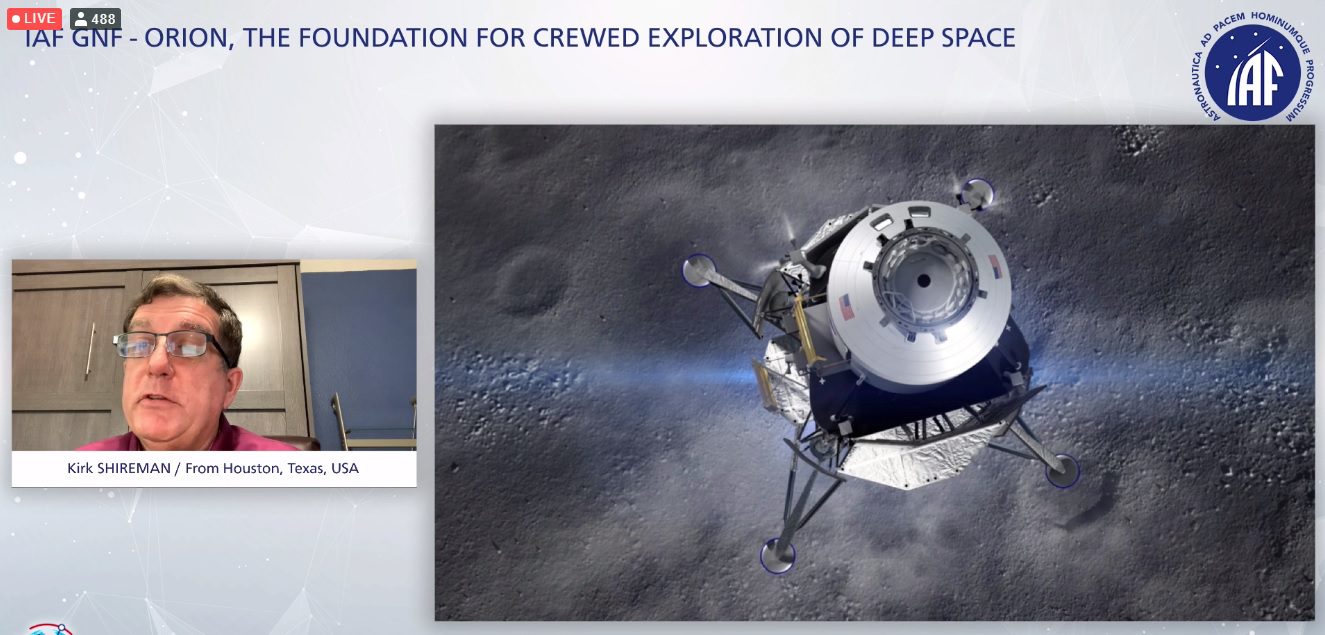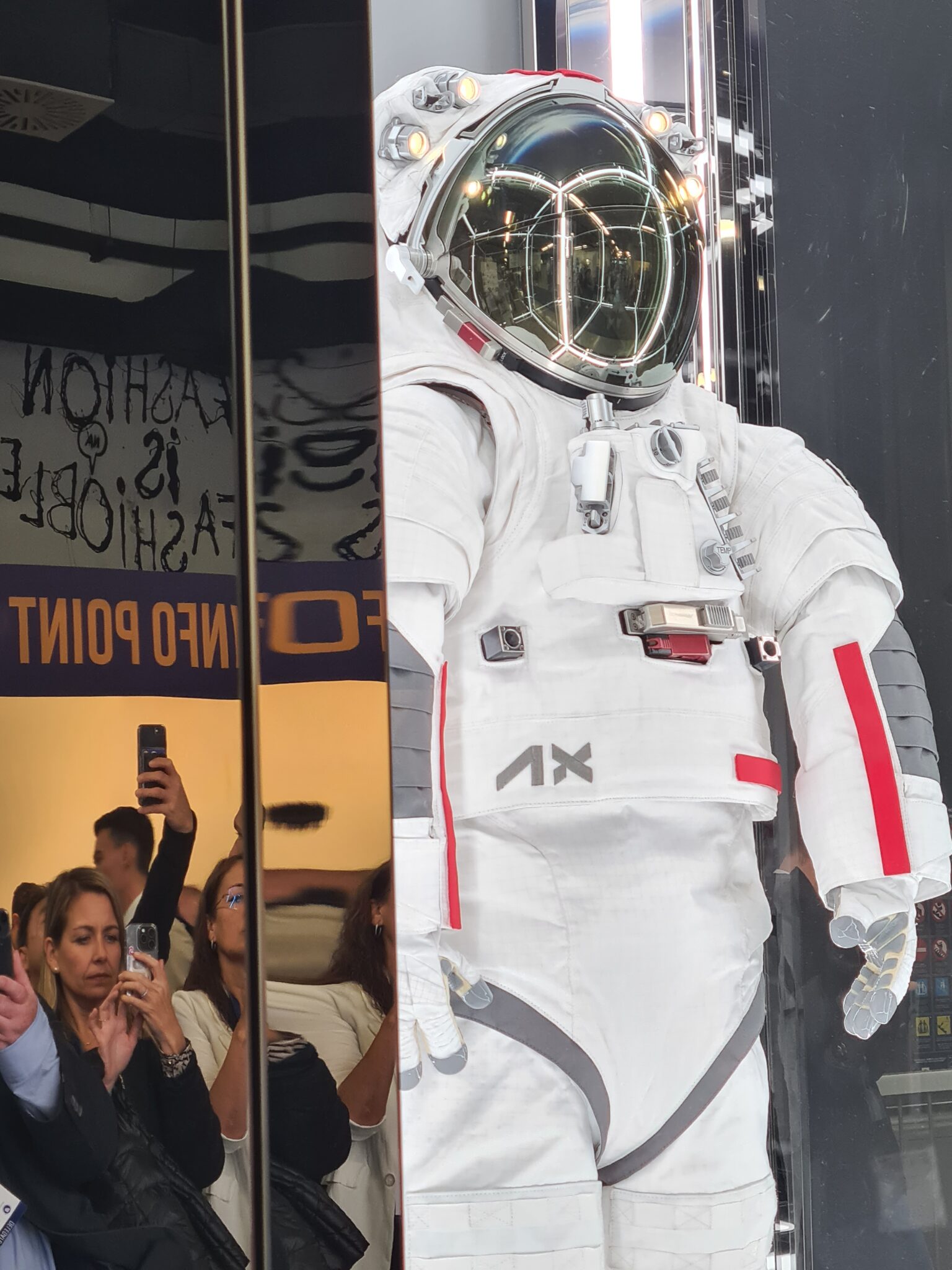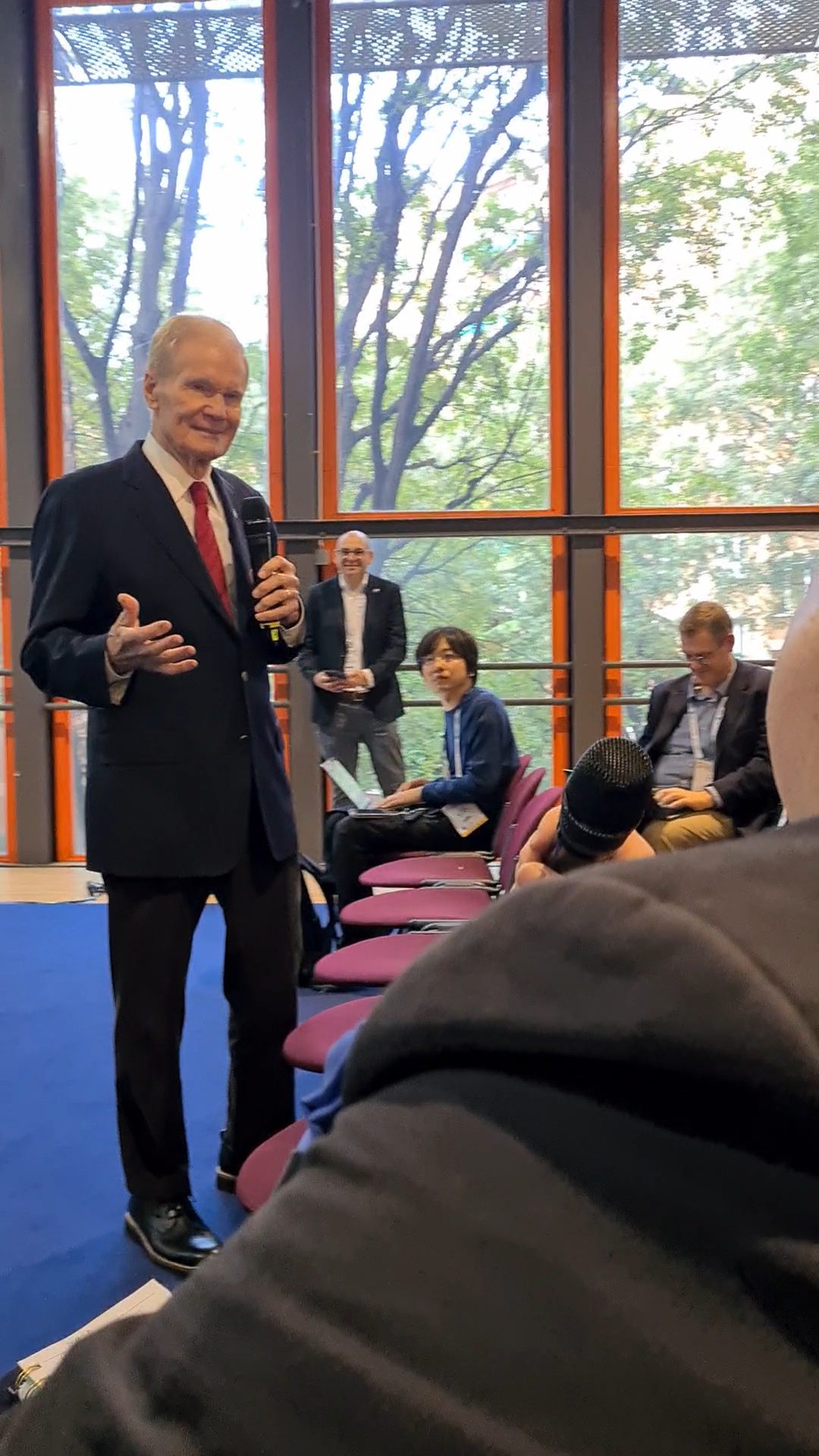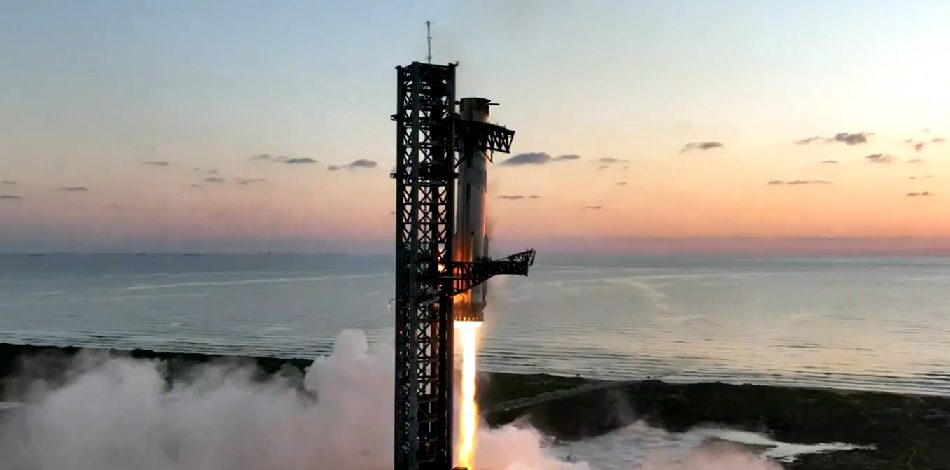While the Chinese Chang’e 4 programme’s design team bathed in the success of winning their gong from the IAC (Wu Wieren, Yu Dengyun and Sun Zezhou, were awarded the prestigious IAC’s World Space Award medal), the highlight lecture presented by Dr. Yu Dengyun of the Chinese Academy of Space Technology (CAST) and deputy designer of the Chang’e 4 mission noted his mission successes including China’s first use of a radioisotope thermoelectric generator (RTG) on a Chinese mission, the innovative use of a relay satellite positioned in a halo orbit the L2 Lagrangian position beyond the Moon on the Earth Moon line, and the fact that the landing achieved was the first on the “dark side” of the Moon.
In addition to the success of the Yutu 2 rover, significant science observations related to subservice measurements were achieved, as was the use of a Very Low Frequency Radio Spectrometer (VLFRS) – a technology ideal for astronomical measurement of starbursts. Dr Yu emphasised that China had long term palns for a Lunar Research Centre based at the lunar South Pole.

Orion technology is now being used on the National Team’s lunar lander ascent module. Courtesy: Lockheed Martin
With respect to NASA’s lunar plans two sequential GNF (Global Networking Forum) presentations were made on the Artemis Programme and on Orion and related technlogies. During the first it was revealed by Walter Cugno of Thales Alenia Space that its Italian arm was developing a habitation module for use on the Moon. NASA’s own supremo on human spaceflight Kathy Leuders warned that while the Artemis Project was laudable it was still at hazard from politics – a veiled reference to the fact that its lunar lander funding was still being held up by the US Congress.
With respect to how the project was progressing Kirk Shireman of Lockheed Martin noted that Orion technology was being used on the National Team’s (including Blue Origin) effort to build a lunar landing craft, to the point that its ascent module interior looked very similar to that of the Orion. A little closer to reality are the Orion capsule and service modules with the Artemis 2 and Artemis 3 service modules already being constructed noted Didier Radola of Airbus. Artemis 3 will be the first landing attempt to put astronauts (including a female astronaut) back on the Moon. Lockheed Martin life support systems engineer Shelby Hopkins noted that she hoped one day to do the same herself.







